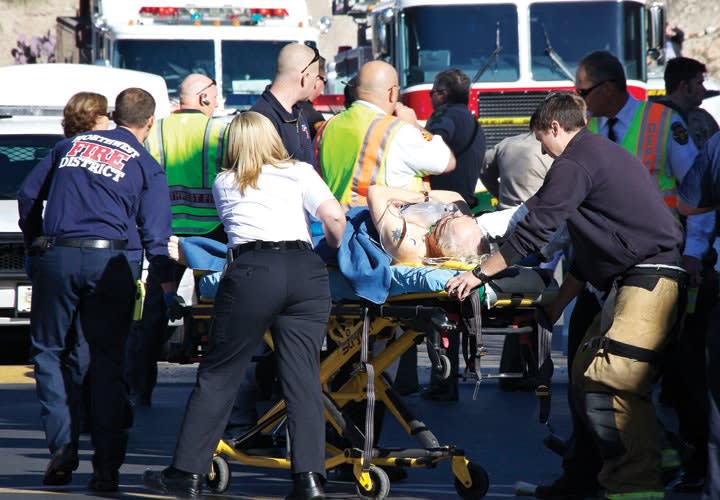Despite being a high-profile case, there was a definite absence of media Monday-morning quarterbacking or second-guessing the public safety response, as happened after the shootings at Columbine High School.
"Things that go well don't make news," explains Capt. Byron Gwaltney, a veteran SWAT officer who joined the sheriff's department in 1987, and served as overall incident commander. PCSD fields approximately 530 sworn officers, who cover more than 9,000 square miles in southern Arizona, with a service population of about 400,000.
The post-event picture that does emerge—the one that didn't interest the media—is one of tightly controlled chaos: a potential rat's nest of multiple responders from a variety of agencies held securely together by a solid command structure and a public safety community well practiced at networking, training, and collaborating at emergency scenes.
"The Tucson tragedy was a crisis that no one could have expected," says Laurence Barton, a scholar and expert in corporate crisis management and risk assessment who teaches the topics to law officers at the FBI Academy in Quantico, Va. "No matter how well you plan, the one that may come back to bite you is the one you didn't anticipate. But in Tucson, much was done properly, and people rose to the occasion."
Preplanning was key, says Ray Sayre, lead instructor for the Frontline Responder Training Project program based at the University of Nevada at Las Vegas. As a Tucson firefighter, Sayre helped implement the city's Metropolitan Medical Response System, a U.S. Department of Homeland Security grant program designed to integrate a community's ability to respond to a mass casualty event, by bringing police, fire, hospitals, public utilities, school districts, and the like together for training and real-time disaster drills.












